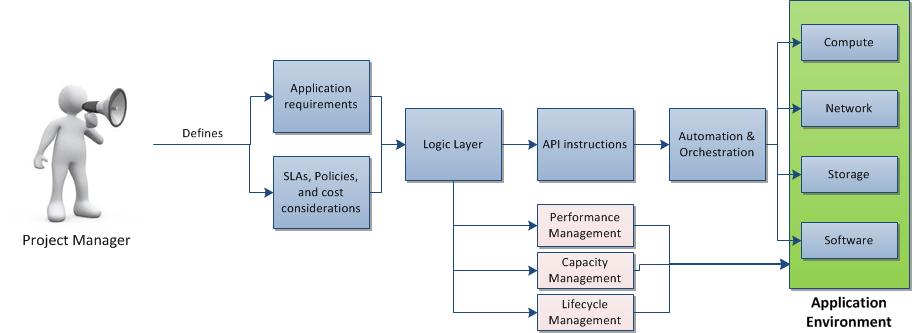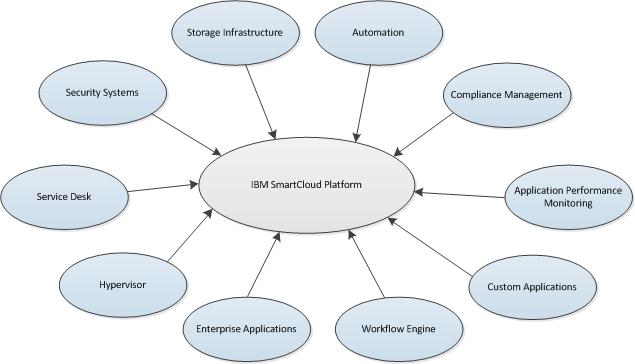The ultimate goal of the Software-Defined Datacenter (SDD), a term coined only a few months ago by VMware’s Steve Herrod, is to centrally control all aspects of the data center – compute, networking, storage – through hardware-independent management and virtualization software. This software will also provide the advanced features that currently constitute the main differentiators for most hardware vendors. The following quote by Steve Herrord succinctly sums up the bad news that VMware is delivering to many of these vendors: “If you’re a company building very specialized hardware … you’re probably not going to love this message.”
The Software-Defined Datacenter: Part 1 of 4 – The Basics
By Torsten Volk on Aug 16, 2012 6:00:58 PM
IBM Pulse 2012: Visibility – Control – Automation
By Torsten Volk on Mar 28, 2012 1:35:00 PM
Every March, IBM invites customers and analysts to its annual Pulse user conference. This year, Pulse was all about the more efficient delivery of IT services, a concept that is usually referred to as “cloud”. Since cloud has developed into a term that, due to its overuse, is often frowned upon, to say the least, it was great to see IBM try hard to demystify this elusive concept, backing it up with numerous case studies and customer testimonials. The fact that many of these case studies were not as polished as you so often see during this type of show, made the experience actually better. It became clear that these were real customers, implementing “cloud” to solve very specific corporate problems and while doing this, running into very specific IT problems. This is something that just happens when breaking new ground and it speaks for IBM’s self confidence to not present only squeaky clean projects at its show.
IBM Pulse 2012: Visibility – Control – Automation
By Torsten Volk on Mar 28, 2012 8:42:01 AM
Every March, IBM invites customers and analysts to its annual Pulse user conference. This year, Pulse was all about the more efficient delivery of IT services, a concept that is usually referred to as "cloud". Since cloud has developed into a term that, due to its overuse, is often frowned upon, to say the least, it was great to see IBM try hard to demystify this elusive concept, backing it up with numerous case studies and customer testimonials. The fact that many of these case studies were not as polished as you so often see during this type of show, made the experience actually better. It became clear that these were real customers, implementing "cloud" to solve very specific corporate problems and while doing this, running into very specific IT problems. This is something that just happens when breaking new ground and it speaks for IBM's self confidence to not present only squeaky clean projects at its show.
Phish-ing for New Operational Revenues
By John Myers on Mar 7, 2012 10:18:35 AM
Miami Dolphins, Sun Life Stadium and IBM Intelligence Operations Center
Last September, Forbes Magazine published its 2011 ranking of the NFL’s Most Valuable Teams. Forbes gives detailed financial information on why NFL franchise values are “only” growing by 1.4%. The article notes that operating costs for NFL franchises are rising. This increase is due to:
Workload Automation: A Future Outlook
By Torsten Volk on Nov 7, 2011 1:20:24 PM
Almost all of today’s business processes are supported and complemented by enterprise IT applications. These applications are often business-critical and therefore tied to strict Service Level Agreements (SLAs). Most enterprises utilize sophisticated monitoring tools to track system health on the application, operating system, hypervisor, hardware, network resources, and storage levels. These health monitoring tools send out alerts to the administrator if any of the warning lights turn yellow or red. When all lights are green, there should be no problem.
Workload Automation: A Future Outlook
By Torsten Volk on Nov 7, 2011 8:16:10 AM
Almost all of today's business processes are supported and complemented by enterprise IT applications. These applications are often business-critical and therefore tied to strict Service Level Agreements (SLAs). Most enterprises utilize sophisticated monitoring tools to track system health on the application, operating system, hypervisor, hardware, network resources, and storage levels. These health monitoring tools send out alerts to the administrator if any of the warning lights turn yellow or red. When all lights are green, there should be no problem.







